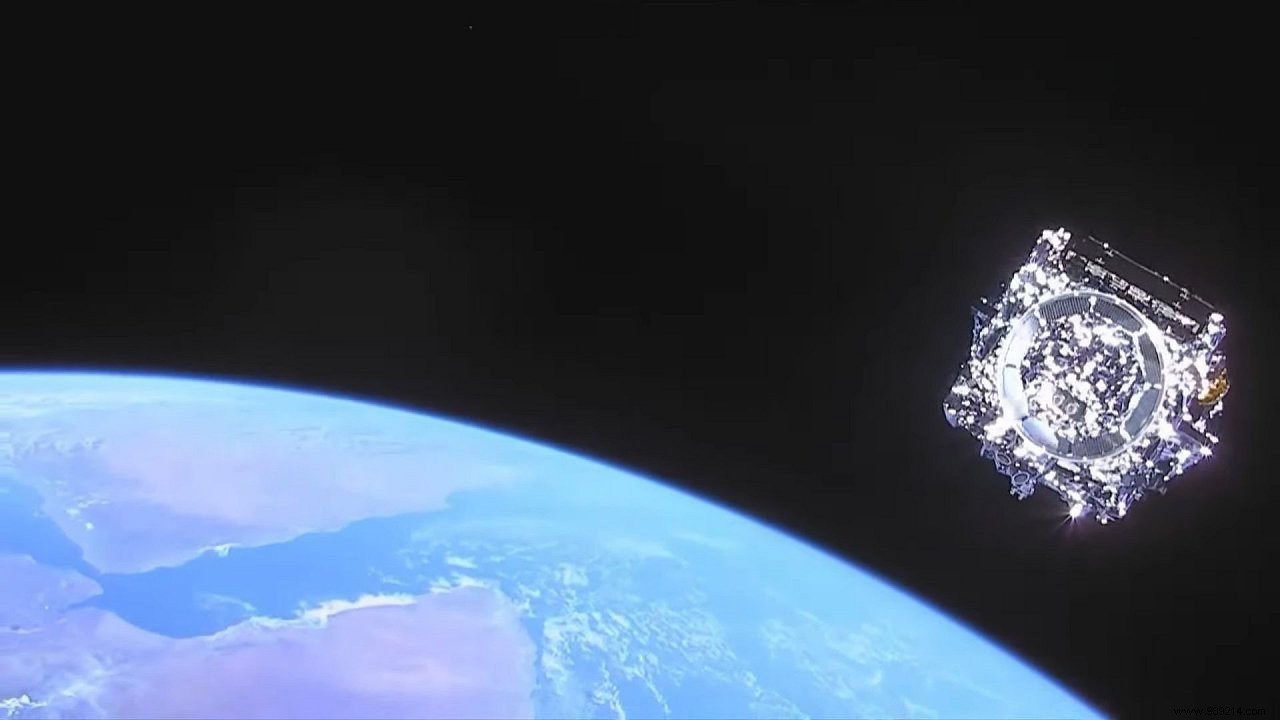A little over twelve hours after the launch of Ariane 5, the thrusters of the James Webb Telescope successfully fired to correct its trajectory. This was one of the most critical maneuvers of this weeks-long journey towards the L2 point.
After several years of waiting, it's finally done! ThisSaturday, December 25 at 1:20 p.m. , French time, many engineers, astronomers and enthusiasts held their breath for several minutes as Ariane 5 launched from Guyana. In its headdress was the largest and most powerful space observatory in all of history. Its objective:to extend our knowledge of the Universe and why not lift the veil on some of the most persistent mysteries of astrophysics.
In the meantime, it is necessary to arrive on site, around the point of Lagrange 2, more than 1.5 million kilometers from the Earth. During this trip, the Webb Telescope will also have to perform several essential maneuvers.
One of them ran successfully about 12.5 hours after launch . While he was about 160,000 km from Earth , the observatory indeed executed a burn of its thrusters to correct its trajectory, thus ensuring that it would reach its destination safely.
Trajectory correction is a fairly common operation in the hours following a ship's launch. Typically, these maneuvers involve turning around in an effort to slow down. In the case of the Webb Telescope, this was impossible because its ultra-sensitive instruments would have been exposed to the Sun.
So the observatory could only increase its speed. In anticipation, the observatory's launch sequence was designed to deliver just a little less power than needed rather than just a little more. This burn, nicknamed Mid-Course Correction Burn 1a (or MCC1a), was therefore an opportunity for the observatory to refine its trajectory towards L2.
According to NASA, this was the largest of three burns planned on this trip and the only one that had to be carefully timed.

As of the third day, this Tuesday, the Webb Telescope will begin to deploy its sunshade in an effort to block sunlight from reaching the telescope's infrared sensors , the most essential parts of this mission. To probe the depths of the cosmos, the observatory must indeed operate at extremely low temperatures. This crucial maneuver should normally take place in three days, involving around 7,000 parts .
After six days of flight, the telescope's secondary mirror will in turn need to unfold before the gold-lined primary mirror opens the next day. Again, everything will have to work properly at the risk of causing the mission to fail. Finally, a month after launch, the Webb Telescope should reach the L2 point.